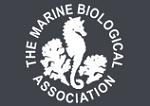APHOTOMARINE
An educational resource dedicated mainly to the photography
and diversity of marine life that can be found in coastal waters
and intertidal areas of Great Britain and Ireland by David Fenwick.

Diplosoma listerianum
- colony on Bugula neritina 1
Jelly crust tunicate
Diplosoma listerianum
- colony on Bugula neritina 2
Jelly crust tunicate
Diplosoma listerianum
- colony on Bugula neritina 3
Jelly crust tunicate
Diplosoma listerianum
- colony on Bugula neritina 4
Jelly crust tunicate
Diplosoma listerianum
- colony on Bugula neritina 5
The colony featured above was found growing between branches of the non-native invasive bryozoan Bugula neritina on a pontoon at Newlyn Marina, Newlyn, Cornwall, 11.08.20.
Jelly crust tunicate
Diplosoma listerianum
- 1 - surface of colony 1
Jelly crust tunicate
Diplosoma listerianum
- 1 - surface of colony 2
Jelly crust tunicate
Diplosoma listerianum
- 1 - specimen on Wakame 1
Jelly crust tunicate
Diplosoma listerianum
- 1 - zooid under microscope 1
Jelly crust tunicate
Diplosoma listerianum
- 2 - surface of colony 3
Jelly crust tunicate
Diplosoma listerianum
- 2 - in sample of fouling 1
Jelly crust tunicate
Diplosoma listerianum
- 2 - zooid under microscope 2
Jelly crust tunicate
Diplosoma listerianum
- 3 - in sample of fouling 2
Jelly crust tunicate
Diplosoma listerianum
- 3 - zooid under microscope 3
The three specimens above were found fouling large solitary sea squirts and algae at Newlyn Marina, Newlyn, Cornwall, 29.09.17.
Jelly crust tunicate
Diplosoma listerianum
- on Saw Wrack at a marina 1
Jelly crust tunicate
Diplosoma listerianum
- on Saw Wrack at a marina 2
Jelly crust tunicate
Diplosoma listerianum
- on Saw Wrack at a marina 3
Jelly crust tunicate
Diplosoma listerianum
- close-up of zooids 1
Jelly crust tunicate
Diplosoma listerianum
- close-up of zooids 2
Specimen above found on driftweed Saw Wrack, Fucus serratus, that had become entangled with other algae on pontoons at Newlyn Marina, Newlyn, Cornwall, 02.06.17.
Jelly crust tunicate
Diplosoma listerianum
- under rock / lowershore 1
Jelly crust tunicate
Diplosoma listerianum
- under rock / lowershore 2
Jelly crust tunicate
Diplosoma listerianum
- under rock / lowershore 3
Jelly crust tunicate
Diplosoma listerianum
- under rock / lowershore 4
Species found under a rock on the lowershore, on the beach south of Mousehole Harbour, Mousehole, Cornwall. 29.05.14. Thanks go to Bernard Picton for help in identifying the specimen above.
Jelly crust tunicate
Diplosoma listerianum
- from plankton sample 1
Jelly crust tunicate
Diplosoma listerianum
- from plankton sample 2
Specimen above found in a sample of plankton from Newlyn Marina, Newlyn, Cornwall, 10.05.18.
APHOTOMARINE supports open source data recording and sharing for the benefit of wildlife, recorders, research, science and education. The project recommends the following websites and works with the following bodies and organisations.
The Marine Biological Association or MBA, based in Plymouth, is one of the world’s longest-running societies dedicated to promoting research into our oceans and the life they support. Since 1884 the MBA has been providing a unified, clear, independent voice on behalf of the marine biological community.It has a growing membership in over 40 countries.
The National Biodiversity Network or NBN is a charity that supports open source data sharing and recording supporting conservation, science and education. "Why do recorders need open source?". Simply because it supports the core values of wildlife recording and the free use of records and data over a very wide network that includes partners like the Natural History Museum.
The taxonomy used here is based on that of the following database, which is also used by the MBA, NHM and the NBN.
The World Register of Marine Species or WoRMS.

